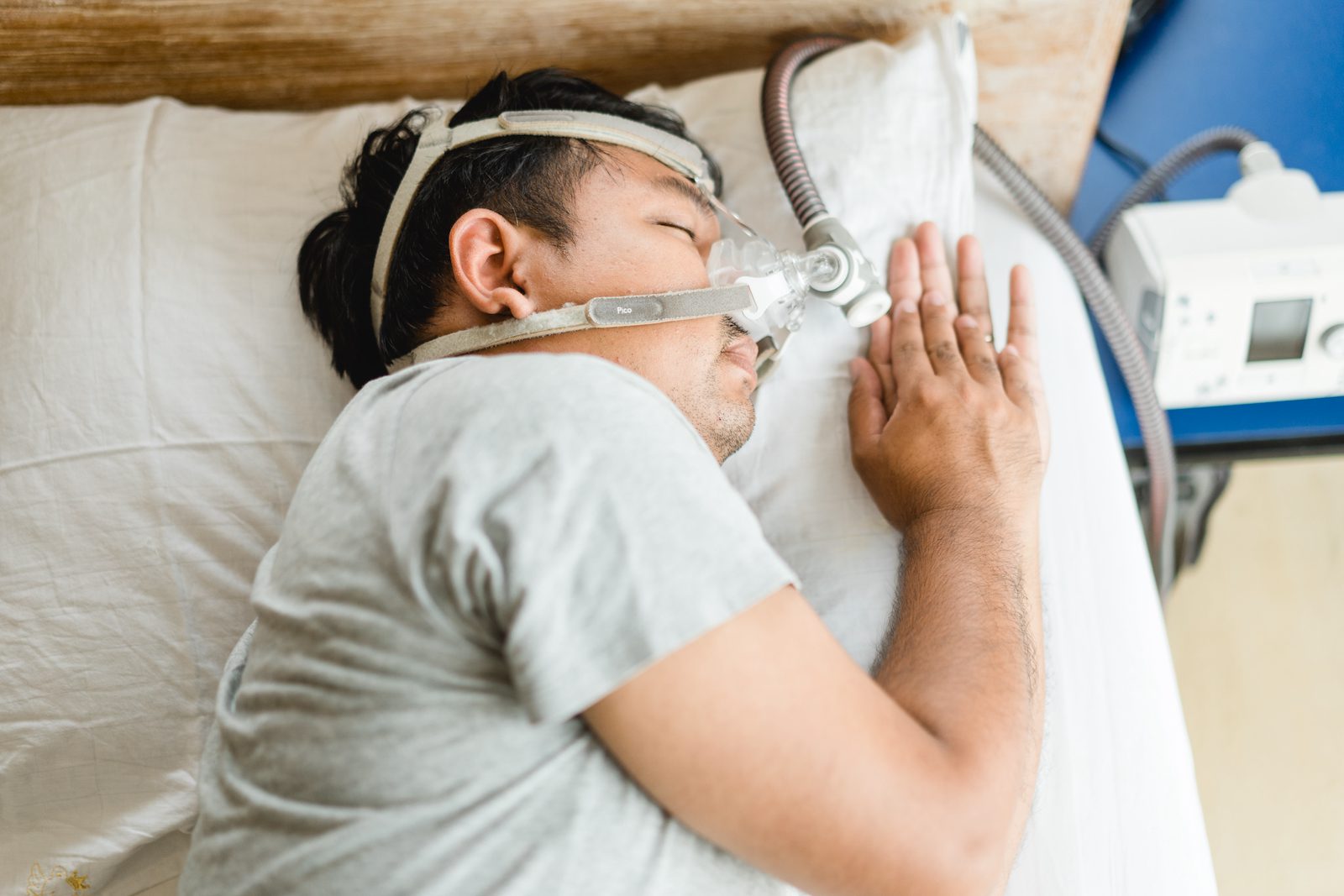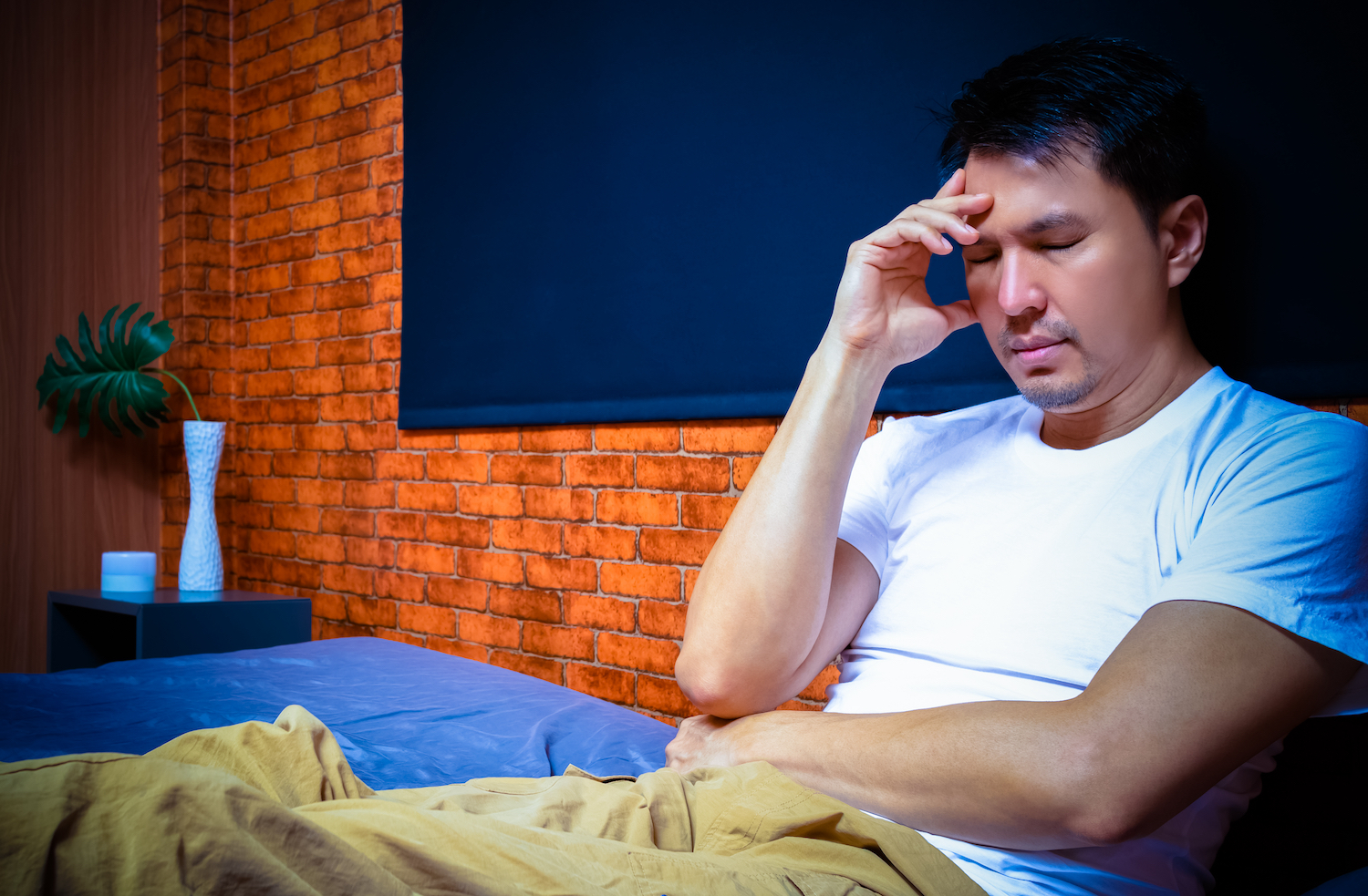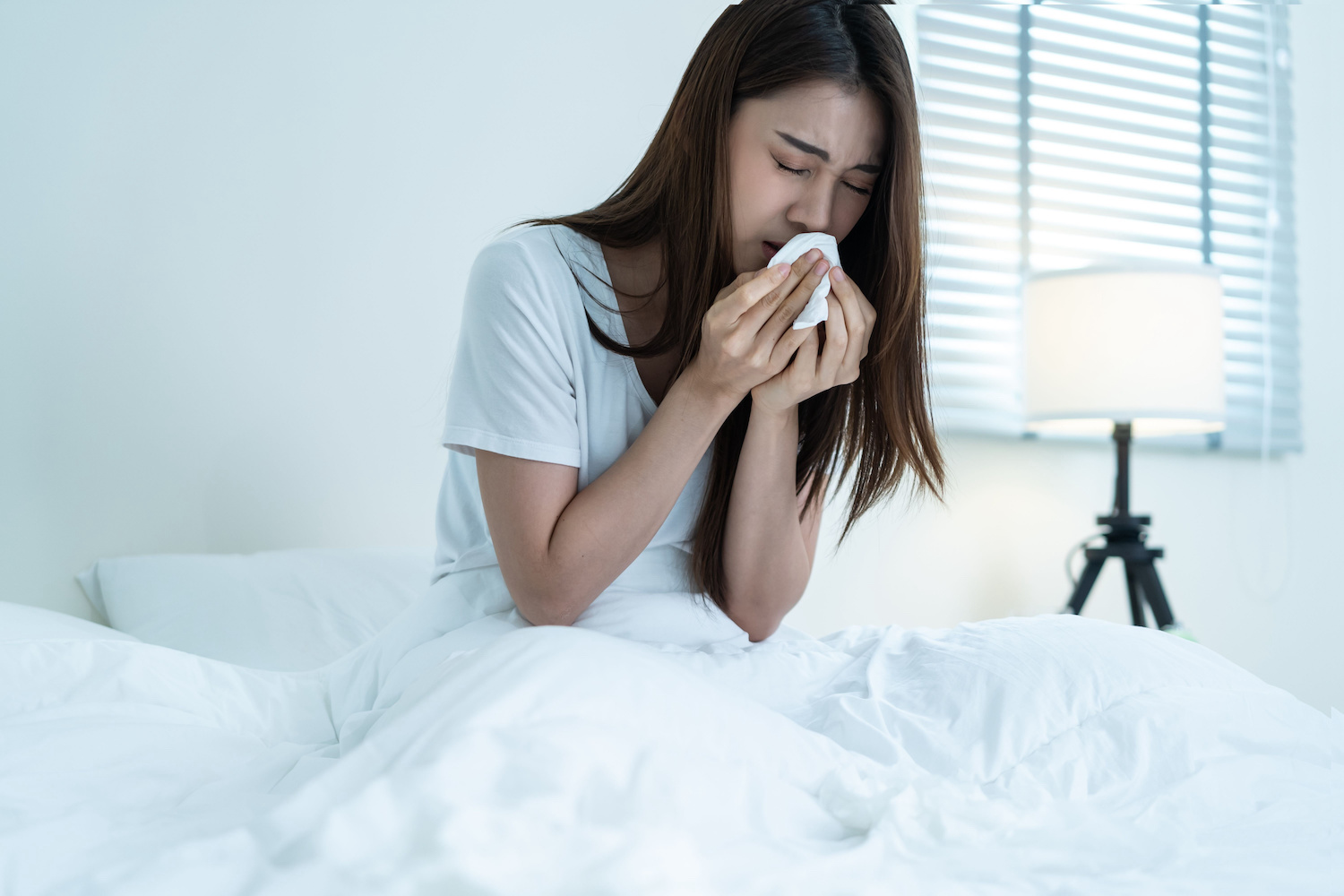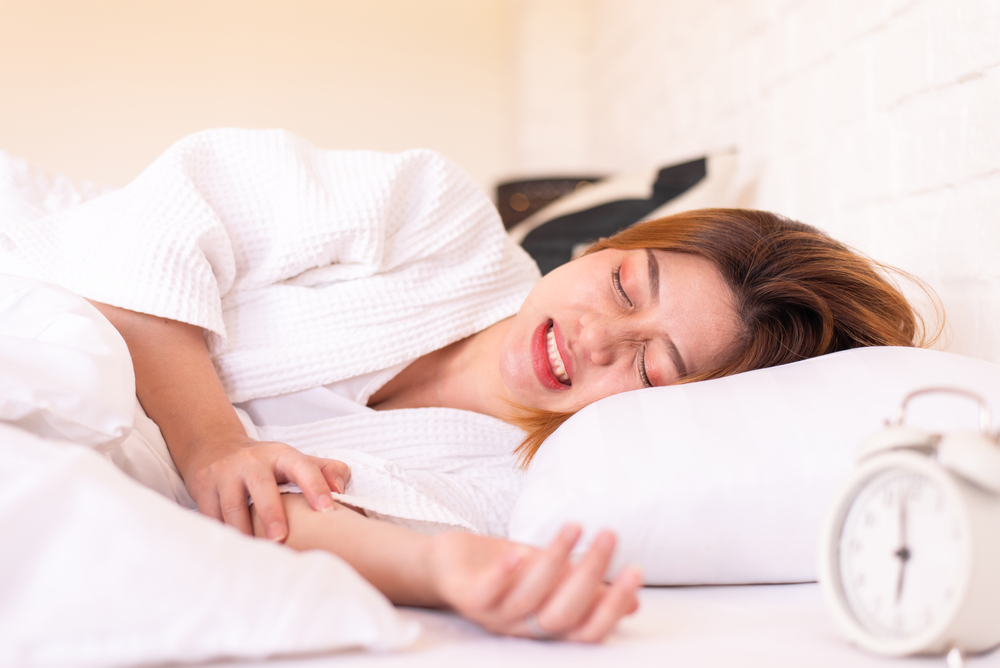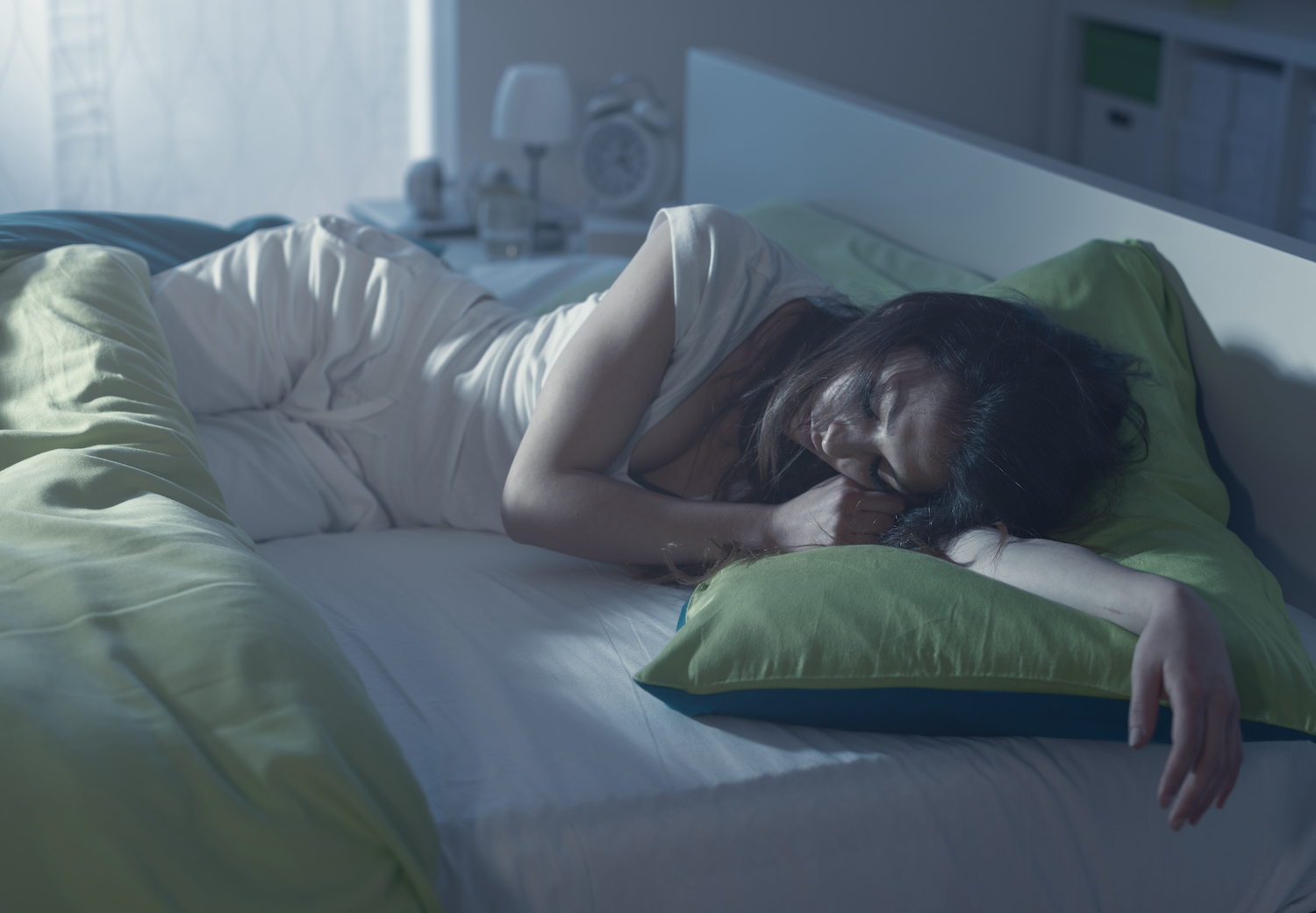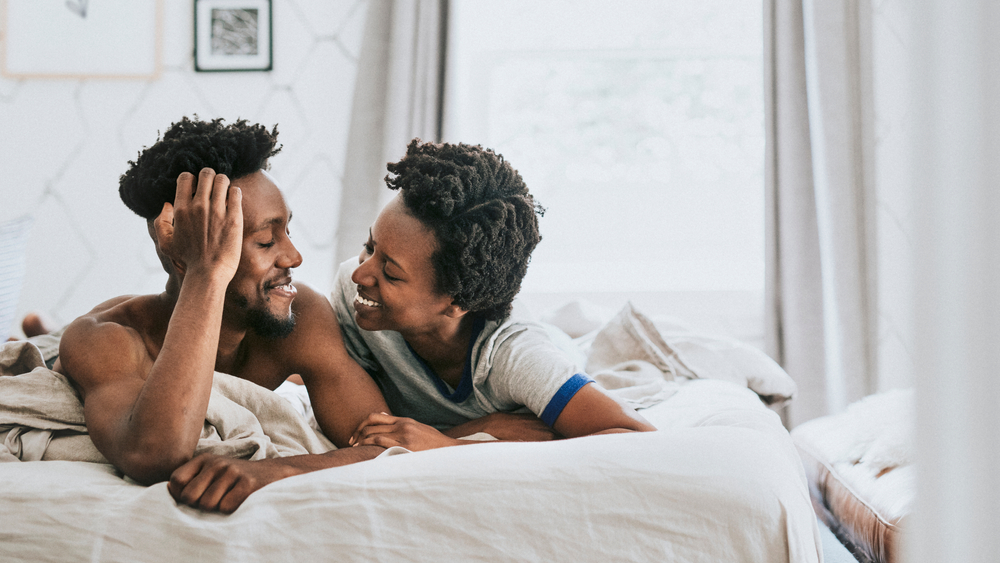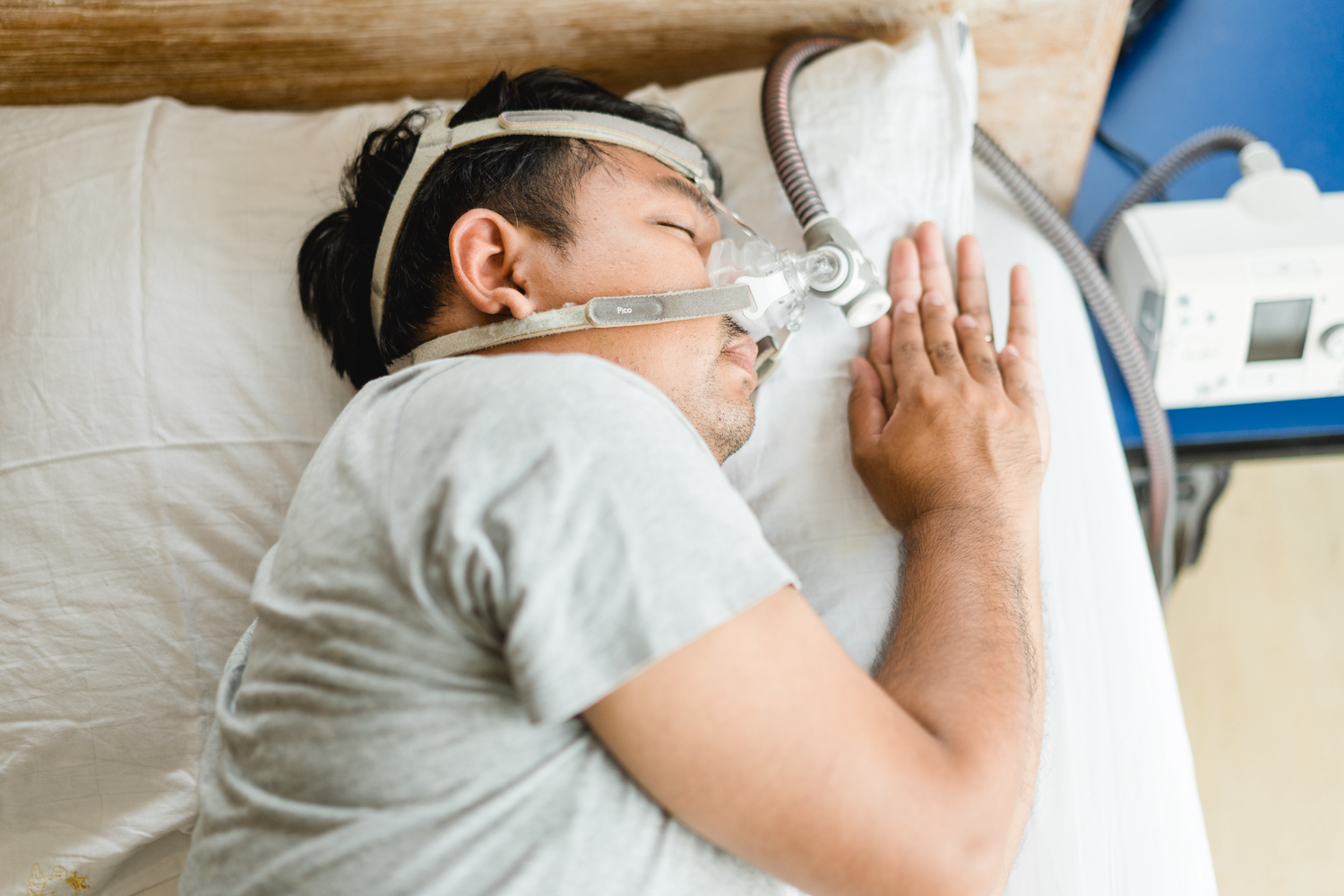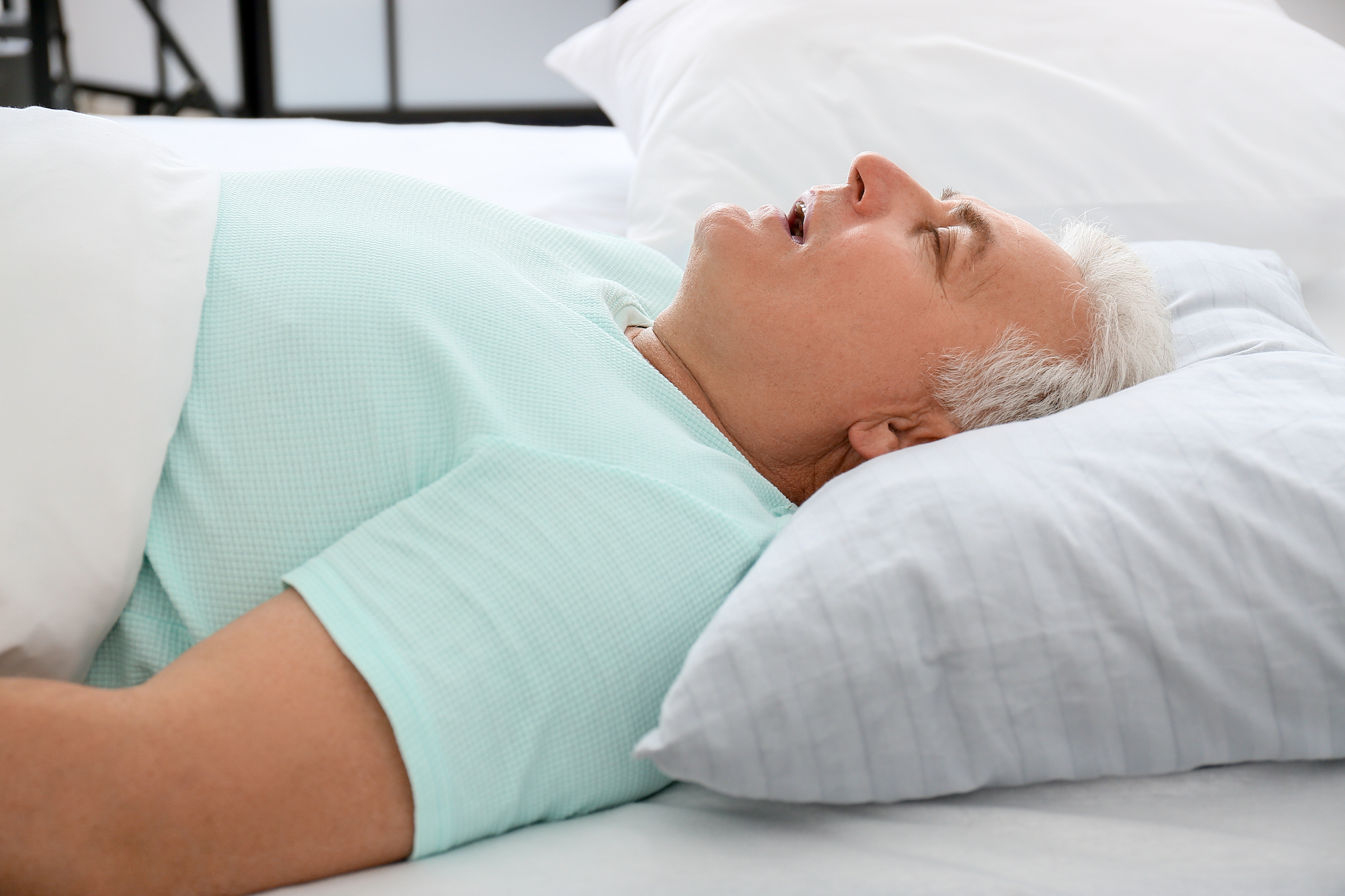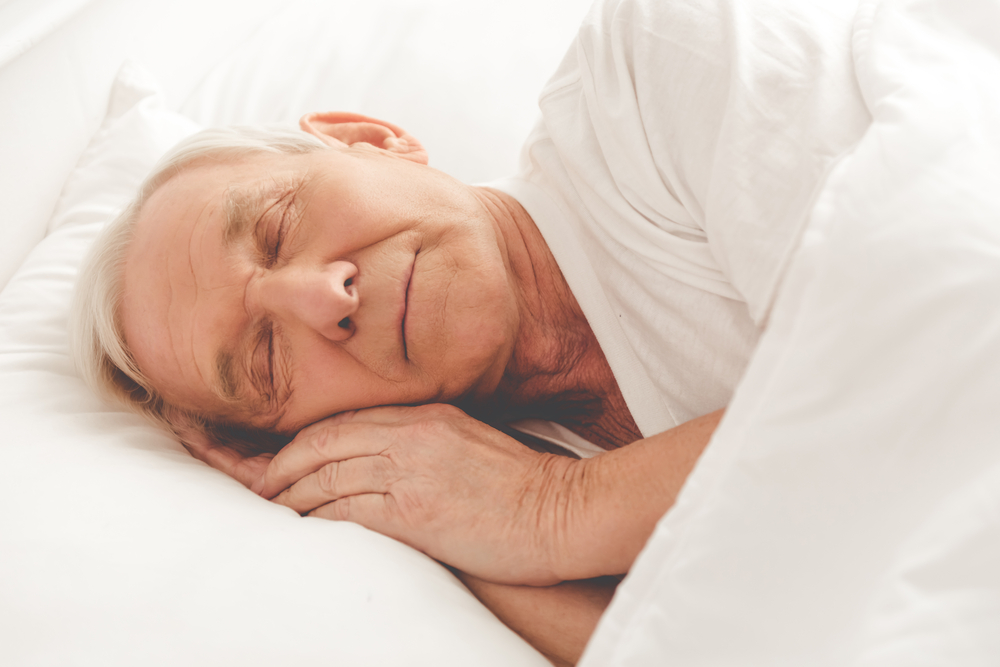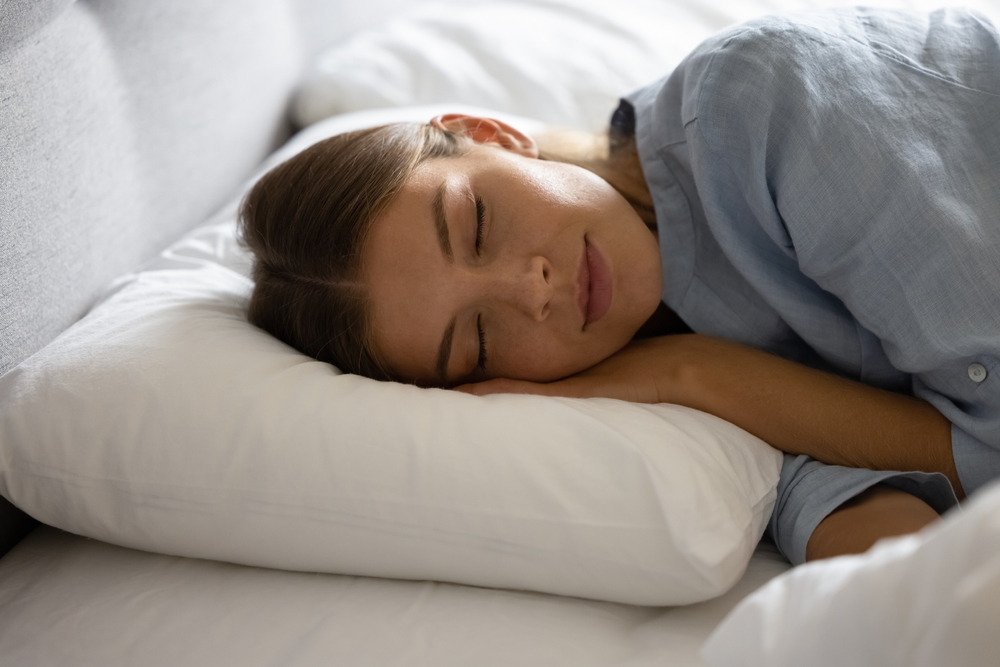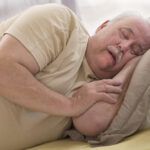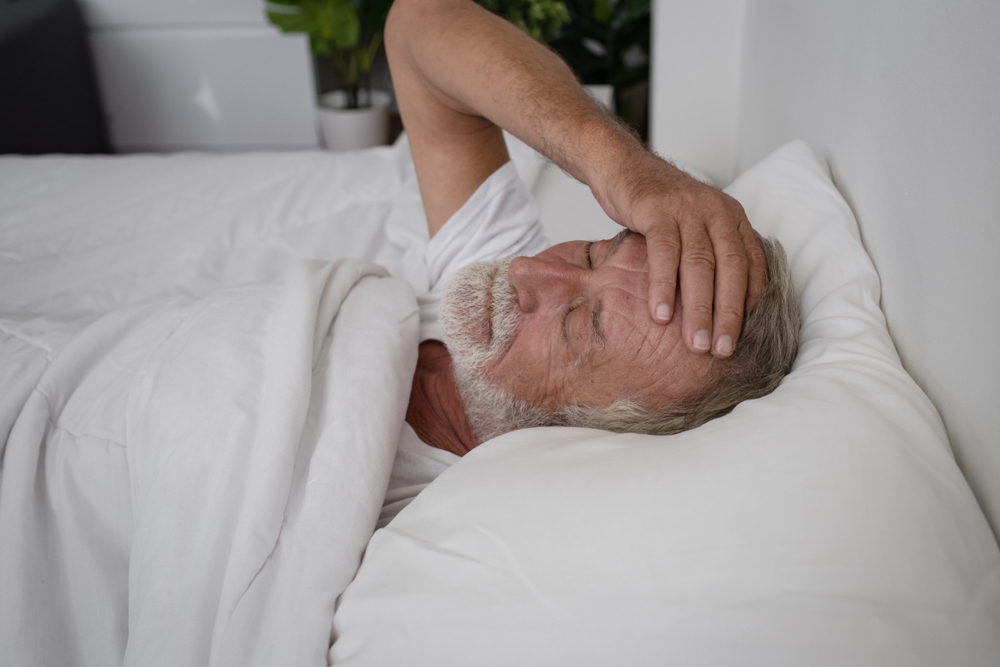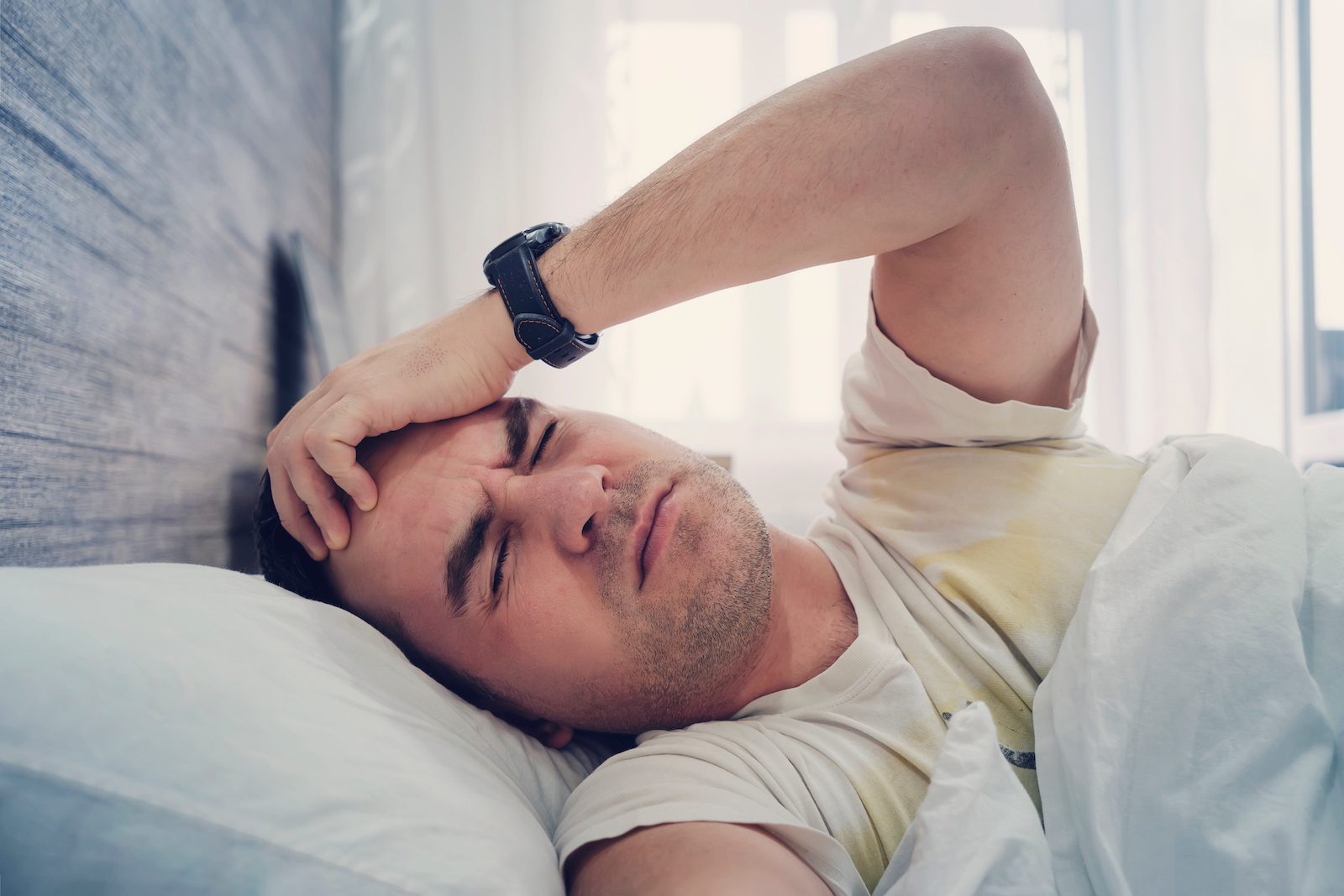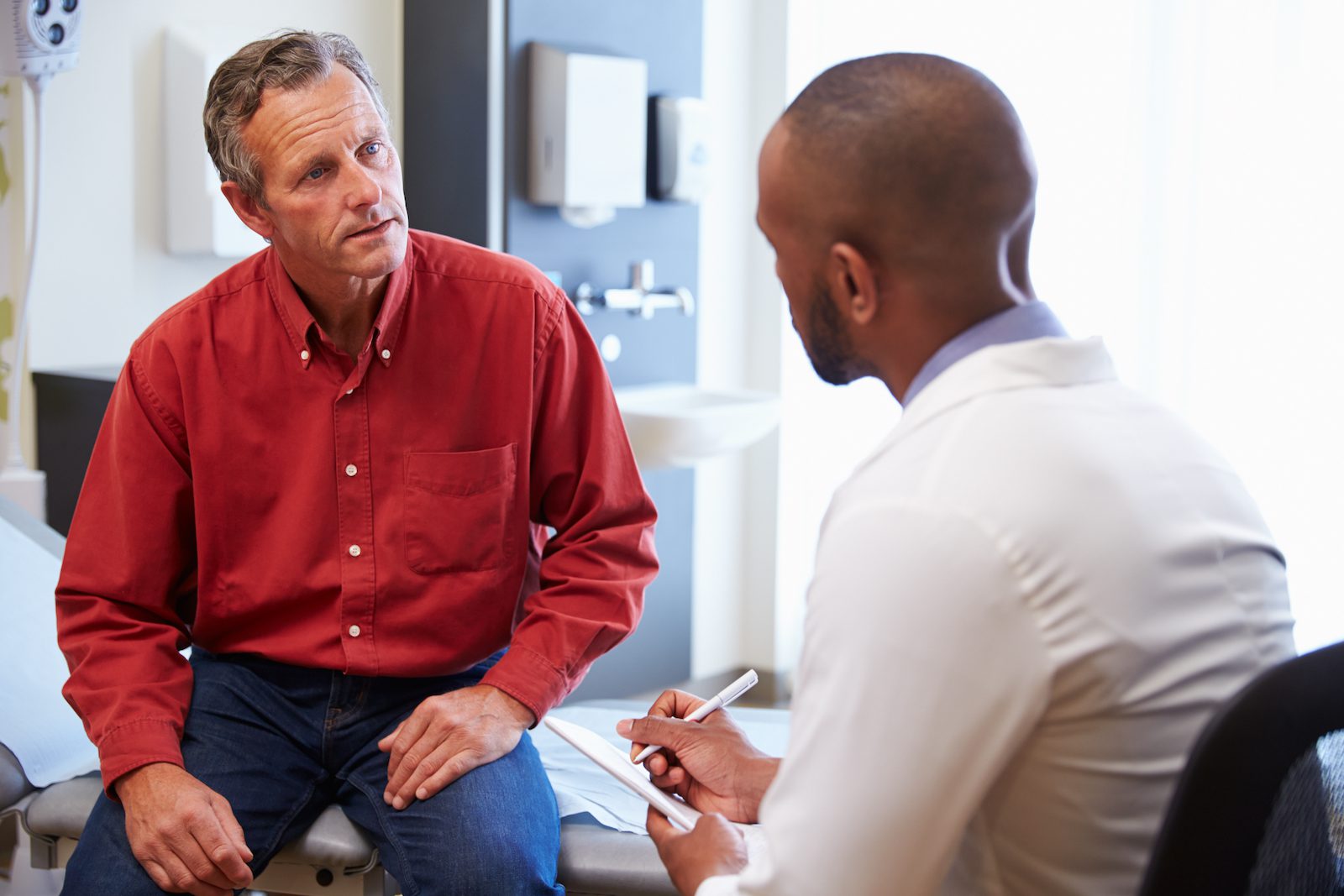Sleep apnea is a disorder that causes a person’s breathing to repeatedly pause or become shallow while they sleep. The most common form of sleep apnea, obstructive sleep apnea (OSA), occurs when soft tissues collapse into the throat. Central sleep apnea (CSA), which is relatively rare, happens when the brain intermittently stops telling the body to breathe.
Both forms of sleep apnea are affected by a person’s sleeping position, though people with OSA appear to experience greater relief or intensification of their symptoms depending on their sleeping position.
Sleeping on Your Right Side
Experts generally recommend side sleeping for people with OSA and CSA. Sleeping on either side reduces the likelihood that throat tissues will collapse into the airway, so many people see an improvement in their symptoms when they sleep on their sides.
Research suggests that people with moderate to severe OSA experience the fewest obstructive breathing events when they sleep on their right side. This may be because the right side position improves blood flow.
Sleeping on Your Left Side
Although sleeping on your left side may be slightly less beneficial than sleeping on your right side, experts still consider it a good position for people with sleep apnea. It may be the best position for some people with co-occurring medical conditions, including:
- Pregnancy
- Gastroesophageal reflux disease (GERD)
- Aerophagia, or the tendency to swallow air during positive airway pressure (PAP) therapy
Sleeping on Your Stomach
Evidence indicates that some people see notable improvements in OSA symptoms when they sleep on their stomachs using a pillow that allows them to be face-down. That said, this position may not be ideal for people who treat their sleep apnea with PAP therapy, as it is likely to displace CPAP masks or create problematic air leaks.
Sleeping on Your Back
In most cases, people with sleep apnea should avoid sleeping on their backs. This position is generally considered the worst for sleep apnea because it allows the tongue to slide backward and into the throat. Back sleeping also encourages snoring.
Best Head Positions for Sleep Apnea
Research suggests that head position plays an important role in managing the symptoms of sleep apnea. When you sleep face up, gravity can pull soft tissues like the tongue into your airway. However, when your head is turned to one side or the other, your throat is less likely to become blocked.
If you must sleep on your back, you might also try elevating the head of your bed. This technique appears to reduce the severity of OSA in people who sleep on their backs.
How to Start Improving Sleep Apnea
If you’ve been diagnosed with sleep apnea, you may wonder what steps you can take to improve your symptoms. Many people with OSA are prescribed PAP therapy—a highly effective treatment. But there are several home remedies that may enhance the benefits of PAP therapy or help people who are unable to tolerate CPAP.
Any home remedy should be in consultation with your doctor to confirm efficacy and reduce the risk of long-term health repercussions from untreated sleep apnea.
- Try positional therapy: If you sleep on your back, consider training yourself to sleep on your side. Numerous products have been created to help with this change, including vests and belts that place an obstruction on the back and wearable devices that vibrate when you roll onto your back.
- Invest in new bedding: Sleeping in a new position may change your pillow and mattress preferences. You may find it easier to sleep with a pillow designed for side sleeping. Additionally, side sleepers generally need a softer mattress than back sleepers.
- Make diet and lifestyle changes: If you have OSA and are also overweight or obese, improving your diet and exercising regularly may reduce your sleep apnea symptoms. Even if you don’t lose weight, exercise might limit the number of breathing events you experience at night and improve your overall sleep health.
Still have questions?
Sleep apnea products can be confusing. If you need individualized assistance, send us an email at [email protected] with your questions and we'll help find the best fit for you.




